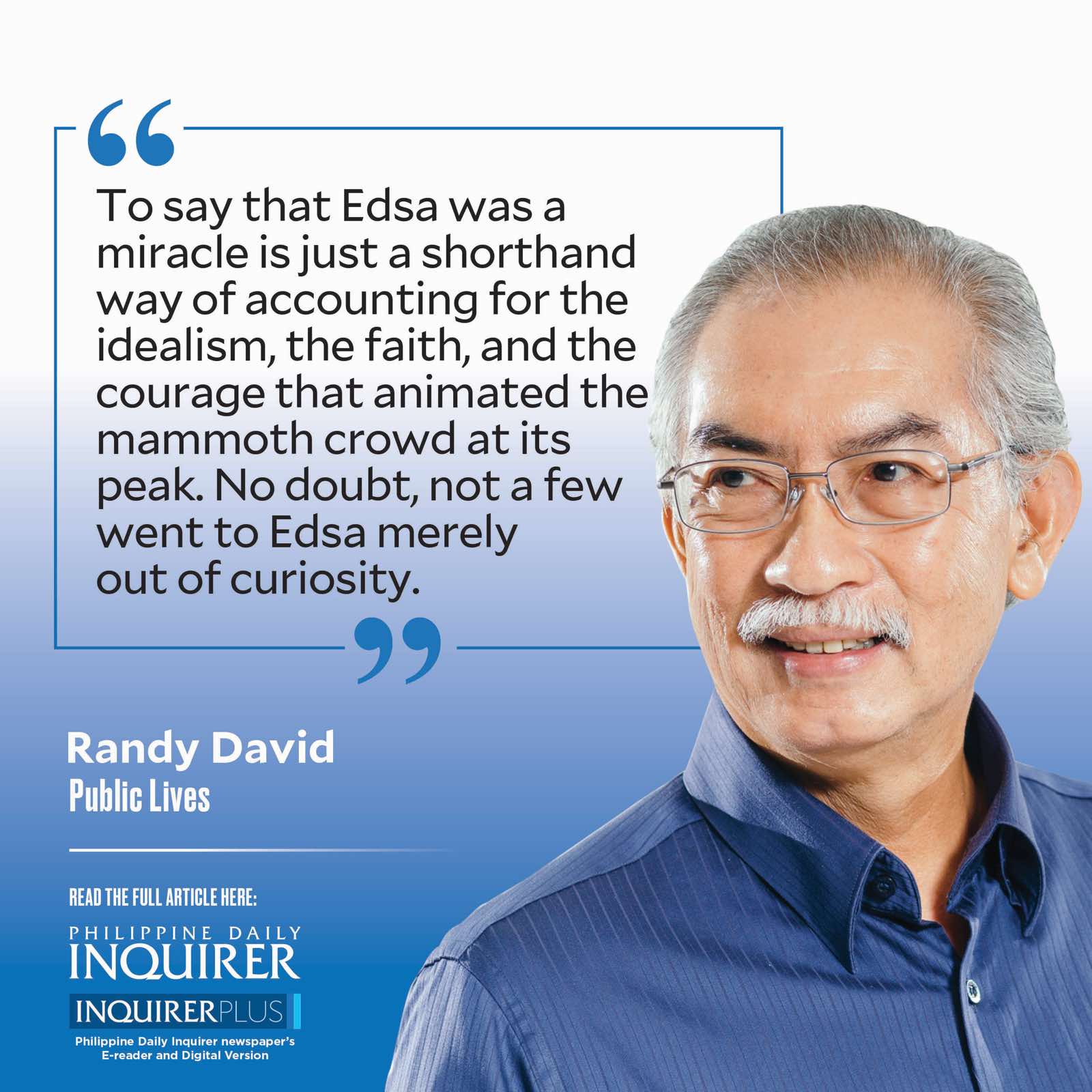Edsa people power and the United States

Thirty-eight years have passed since we Filipinos stumbled upon a peaceful way of toppling down an entrenched dictatorship.
We called it “people power,” a massive protest gathering of people in a public place in sheer defiance of the coercive power of established authority. The world hailed it not just as a model for getting rid of dictators but as an alternative to bloody revolutions and the unending cycles of violence they typically unleash.
Article continues after this advertisementTo say that Edsa was a miracle is just a shorthand way of accounting for the idealism, the faith, and the courage that animated the mammoth crowd at its peak.
No doubt, not a few went to Edsa merely out of curiosity. But their being in the crowd—discussing the significance of rapidly unfolding events and wondering how all these will affect the nation as a whole—gave them a sense that they were in the middle of something historic.
When they found themselves standing their ground against the tanks that Marcos had sent to disperse the crowd, they surely must have felt that they were not merely witnessing history; they were actually making it. This was a transformative experience.
Article continues after this advertisementBut so complex was the mix of forces and motives that formed and propelled people power that it was impossible to predict where it was headed. A lot initially depended on the readiness of those who came early to defend the protest space they occupied.
Their expectation was that the longer they stayed, the greater would be the likelihood that many would come and join them. Even as they steeled themselves for the assault that was to come, they also hoped that those who were ordered to disperse them would hesitate to attack unarmed and defenseless citizens.
As naïve as these hopes may have been, they were not entirely off the mark. The people knew that, through the eyes of the foreign correspondents who had descended upon Edsa, the world was watching. In particular, America was watching. The question was whether then United States President Ronald Reagan, who was known to be a close personal friend of the Marcoses, would countenance the use of state violence to suppress the swelling anti-Marcos crowd.
The sentiment at Edsa at that time was that if Reagan had his way, he would not hesitate to publicly support the Marcos regime’s claim to legitimacy.
But one thing was also clear: American public sentiment, as seen in the mainstream US media and in the views of some outspoken members of the US Congress, had turned resolutely against Marcos.
The manifest venality of the dictatorship so outweighed longstanding worries about a communist takeover if Marcos fell from power that the US felt it necessary to nudge Marcos to change if he wanted to survive.
I don’t think anyone knew at that point how the impasse was going to be resolved. As the Edsa crowd grew in size, the energy that animated people power reverberated in major capitals around the country as well as in Philippine embassies abroad.
At the same time, the motley group of renegade soldiers that had gathered around Gen. Fidel V. Ramos and Defense Minister Juan Ponce Enrile was gaining support with the defection of sections of the country’s armed forces. These parallel developments brought up the question of whether what was happening was a military coup or a civilian uprising.
It was probably both at the beginning—two agendas racing against one another—but in the end the duality was resolved in favor of a purely civilian political order.
The resolution, however, did not come immediately with the departure of Marcos or the swearing in of Cory Aquino. It came only at the end of a protracted political process punctuated by several coup attempts and Cabinet reshuffles.
Because America had played an outsize role in our nation’s history, it was natural for people on both the right and left to believe that the Edsa events were being orchestrated in accordance with an American script. That belief not only underestimates ordinary people’s capacity for heroism and patriotism but it also exaggerates the monolithic nature of US power.
Nowhere perhaps is the ambivalent character of American foreign policy more evident than in the divergent opinions that attended the crafting of a suitable approach to the crisis brought about by the standoff at Edsa in the aftermath of the snap election of February 1986.
The most complete reference for this period is former US secretary of state George P. Shultz’s memoir, titled “Turmoil and Triumph,” published in 1993. Chapter 31 is all about people power in the Philippines and the critical days that led to the departure of the Marcos family from Malacañang and their exile to Hawaii.
Uppermost in the minds of America’s top officials was how to prevent the real possibility that the crisis in the Philippines would lead to civil war. They feared that in such a war, the fledgling democratic movement that had grown around Aquino would at once be sidelined by the more organized armed communist movement. America’s military bases in the Philippines would be imperiled.
There was no choice but to get Marcos to agree to a peaceful democratic transition, but getting there was far from easy. The breakthrough came on Feb. 24, when Marcos telephoned Sen. Paul Laxalt to say he was “willing to bargain.” Laxalt told him that “power brokering won’t work,” and advised him that he should “cut and cut clean.”
—————-
public.lives@gmail.com
















